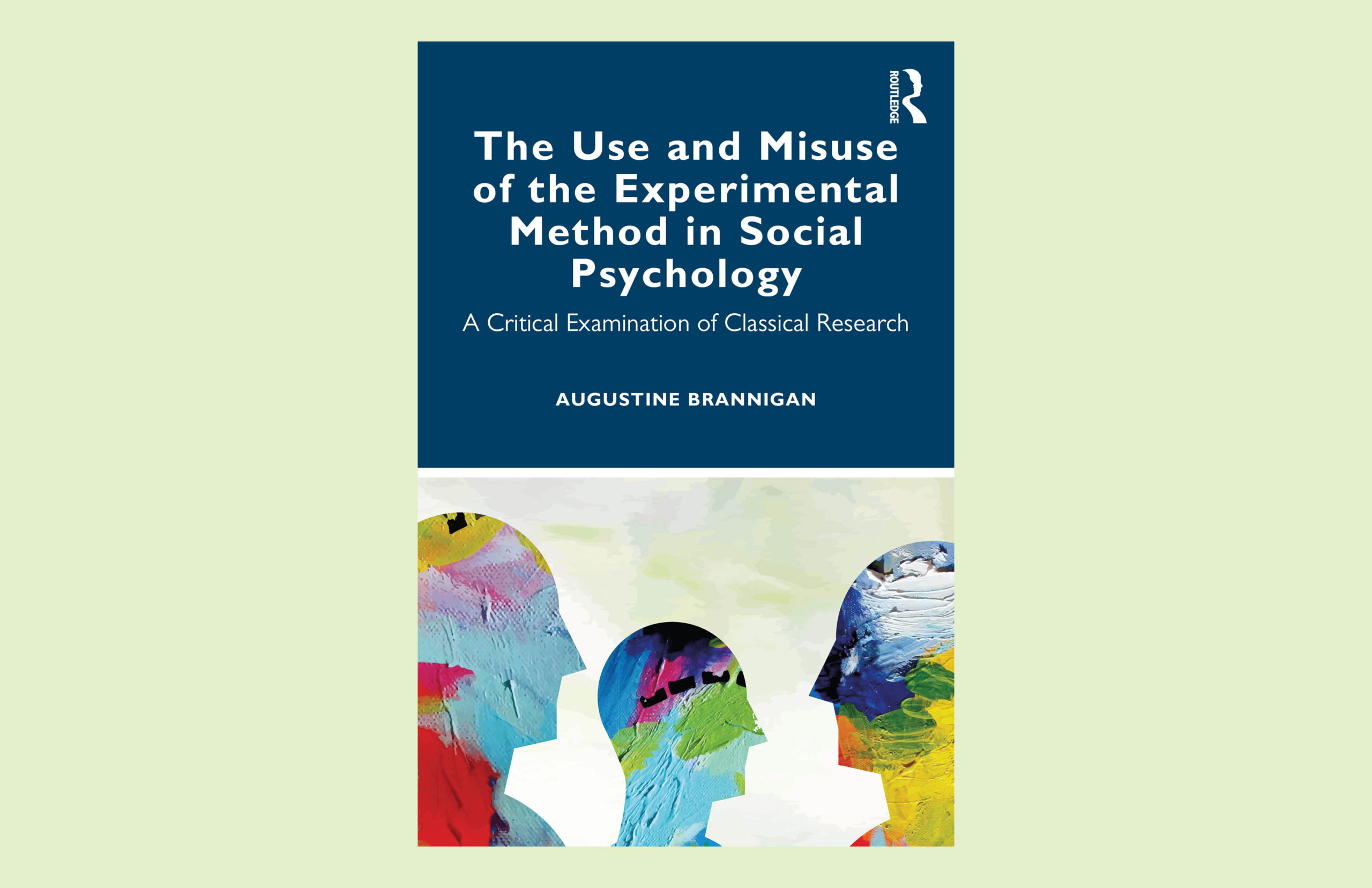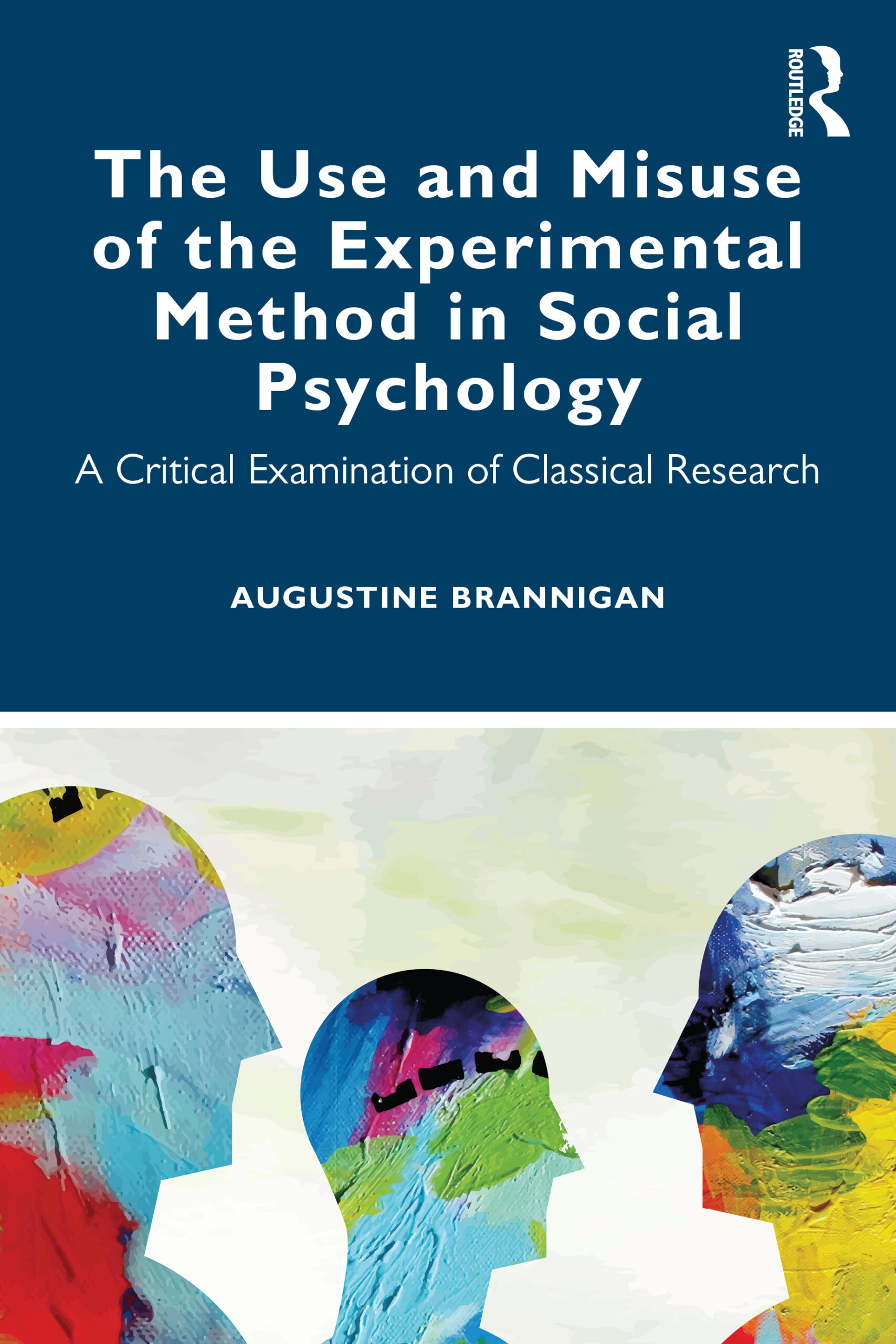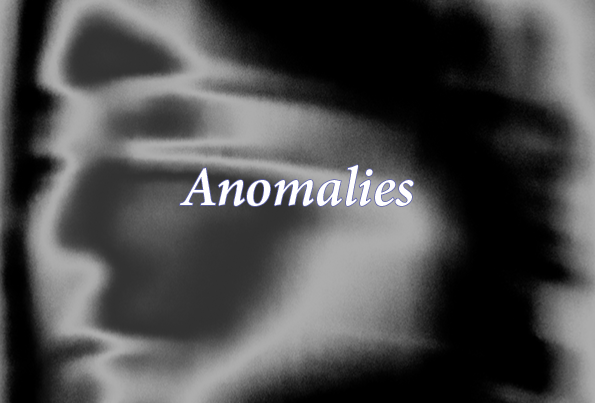
Milgram, Sherif, Rosenhan, Zimbardo, Rosenthal. To any psychology student, these names signify the giants of social psychology whose legacy is unspeakable. However, is it really so? Augustine Brannigan, professor emeritus of sociology at the University of Calgary, suggests in his book The Use and Misuse of the Experimental Method in Social Psychology, that much of what we know from the classical studies of social psychology might be subject to change, given that these studies do not replicate. This is because of all the imperfections in the research that he points out, mentioning both methodological and theoretical limitations, and taking into account vast amounts of background information regarding each study discussed. The whole book is therefore a masterfully crafted evaluation of the most famous studies in social psychology, and even though there is much more to say about the replication crisis in general, professor Brannigan explores the specific elements of classical experiments in social psychology that contributed to non-replicability.
Brannigan suggests that there are several reasons for this non-replicability. First, it is the orthodox and blind use of the experimental method that set social psychology on the wrong path – the method dictated which phenomena are to be studied, rather than the phenomena dictating what methods should be chosen. This way, a lot of contextually rich phenomena were not studied in real life, rather, laboratory metaphors, short-term and devoid of richness and credibility of the social situations, were created to conduct experiments. In this way, Brannigan argues that the experiments lacked construct validity, the reason why they were not replicated by means other than the same experiment. For instance, the credibility of the Milgram experiment is doubted; participants that obeyed in giving electrical shocks were more likely to think that the suffering of the confederate was faked than participants who resisted giving electrical shocks, suggesting that participants gave shocks because they thought the confederate was actually not suffering. Moreover, contrary to the famous bystander research (e.g., Darley & Latané, 1968) which suggests that the more bystanders there are, the less likely it is for any of the bystanders to help, most real-life data suggest that people more often than not help the person in need (Netherlands Institute for the Study of Crime and Law Enforcement, 2019). Therefore, it is likely that bystanders in social psychology research simply interpret the situation as not dangerous. It is hard to argue with Brannigan about this point, as a lack of ecological validity has long been known to impinge on social psychology research.
Secondly, Brannigan suggests that the lack of replicability may exist because the experiments were likely more pedagogical demonstrations rather than attempts at falsification of hypotheses. According to the author, this may be due to the moral appeal of such classical studies, such as Milgram trying to approximate the experimental situation to that of the Holocaust. In such situations, experimenters try to make a moral point rather than be concerned with the validity of test results. This is related to the verification bias, where researchers are mainly concerned with disproving the null hypotheses, whatever the means. For example, it turned out that Sherif called off the original camp study because the boy participants did not act according to the script prepared by the experimenter and were not hostile towards each other. This only happened in the subsequent camp study, which suspiciously did make it to publication. Brannigan’s point of criticism is strong here, as pursuing a more philosophical or moral view is not scientific – for it searches to preach, rather than find truth.
Finally, Brannigan argues that the classic experiments in social psychology were often ethically unsound, including deception and outright harm to participants, and therefore direct replications are oftentimes refused by the ethics review committees. For example, in the Milgram study, experimenters were not following the script by having lengthy arguments with the ‘teachers’ to continue giving electrical shocks to the ‘learner’. Moreover, some of the participants were not even debriefed. Similarly, no one consented to the Pygmalion study of the teacher’s expectations, and some of the prisoners in the Stanford prison experiment had to be prematurely released because of psychological harm. This makes one wonder how such studies were allowed in the first place.
As Brannigan suggests, the failure of the experimental method, moral appeal of such studies as well as low ethical standards mean non-replicability for the classical studies in social psychology. This is a problem, since it further hinders the cumulation of stable knowledge in the field. However, matters are not as grim as it would seem – there are options for a change in this epistemological crisis. For instance, using qualitative research as a complementary method to collect data could shed more light on social processes though adopting a more data-driven, exploratory approach, providing viable hypotheses for further quantitative research. According to Brannigan, we need to acknowledge the inherent idiosyncrasies of human life and history, instead of assuming that the history is dictated by psychological and sociological laws that have yet to be discovered. The validity of this epistemological standpoint is questionable, however, it is clear that the classical experiments in social psychology give us neither solid nor unified understanding of the social human, as Brannigan signifies in his eye-opening book, The Use and Misuse of the Experimental Method in Social Psychology.
Available at your local book store or online, starting from €30,-.

References
– Darley, J.M., Latané, B. (1968). Bystander intervention in emergencies: diffusion of responsibility. Journal of Personality and Social Psychology, 4, 377–383.
– Netherlands Institute for the Study of Crime and Law Enforcement. (2019). Bystander effect in street disputes disquestioned. Amsterdam, The Netherlands. Retrieved from https://nscr.nl/app/uploads/2020/07/NSCR_AnnualReport_2019.pd
Milgram, Sherif, Rosenhan, Zimbardo, Rosenthal. To any psychology student, these names signify the giants of social psychology whose legacy is unspeakable. However, is it really so? Augustine Brannigan, professor emeritus of sociology at the University of Calgary, suggests in his book The Use and Misuse of the Experimental Method in Social Psychology, that much of what we know from the classical studies of social psychology might be subject to change, given that these studies do not replicate. This is because of all the imperfections in the research that he points out, mentioning both methodological and theoretical limitations, and taking into account vast amounts of background information regarding each study discussed. The whole book is therefore a masterfully crafted evaluation of the most famous studies in social psychology, and even though there is much more to say about the replication crisis in general, professor Brannigan explores the specific elements of classical experiments in social psychology that contributed to non-replicability.
Brannigan suggests that there are several reasons for this non-replicability. First, it is the orthodox and blind use of the experimental method that set social psychology on the wrong path – the method dictated which phenomena are to be studied, rather than the phenomena dictating what methods should be chosen. This way, a lot of contextually rich phenomena were not studied in real life, rather, laboratory metaphors, short-term and devoid of richness and credibility of the social situations, were created to conduct experiments. In this way, Brannigan argues that the experiments lacked construct validity, the reason why they were not replicated by means other than the same experiment. For instance, the credibility of the Milgram experiment is doubted; participants that obeyed in giving electrical shocks were more likely to think that the suffering of the confederate was faked than participants who resisted giving electrical shocks, suggesting that participants gave shocks because they thought the confederate was actually not suffering. Moreover, contrary to the famous bystander research (e.g., Darley & Latané, 1968) which suggests that the more bystanders there are, the less likely it is for any of the bystanders to help, most real-life data suggest that people more often than not help the person in need (Netherlands Institute for the Study of Crime and Law Enforcement, 2019). Therefore, it is likely that bystanders in social psychology research simply interpret the situation as not dangerous. It is hard to argue with Brannigan about this point, as a lack of ecological validity has long been known to impinge on social psychology research.
Secondly, Brannigan suggests that the lack of replicability may exist because the experiments were likely more pedagogical demonstrations rather than attempts at falsification of hypotheses. According to the author, this may be due to the moral appeal of such classical studies, such as Milgram trying to approximate the experimental situation to that of the Holocaust. In such situations, experimenters try to make a moral point rather than be concerned with the validity of test results. This is related to the verification bias, where researchers are mainly concerned with disproving the null hypotheses, whatever the means. For example, it turned out that Sherif called off the original camp study because the boy participants did not act according to the script prepared by the experimenter and were not hostile towards each other. This only happened in the subsequent camp study, which suspiciously did make it to publication. Brannigan’s point of criticism is strong here, as pursuing a more philosophical or moral view is not scientific – for it searches to preach, rather than find truth.
Finally, Brannigan argues that the classic experiments in social psychology were often ethically unsound, including deception and outright harm to participants, and therefore direct replications are oftentimes refused by the ethics review committees. For example, in the Milgram study, experimenters were not following the script by having lengthy arguments with the ‘teachers’ to continue giving electrical shocks to the ‘learner’. Moreover, some of the participants were not even debriefed. Similarly, no one consented to the Pygmalion study of the teacher’s expectations, and some of the prisoners in the Stanford prison experiment had to be prematurely released because of psychological harm. This makes one wonder how such studies were allowed in the first place.
As Brannigan suggests, the failure of the experimental method, moral appeal of such studies as well as low ethical standards mean non-replicability for the classical studies in social psychology. This is a problem, since it further hinders the cumulation of stable knowledge in the field. However, matters are not as grim as it would seem – there are options for a change in this epistemological crisis. For instance, using qualitative research as a complementary method to collect data could shed more light on social processes though adopting a more data-driven, exploratory approach, providing viable hypotheses for further quantitative research. According to Brannigan, we need to acknowledge the inherent idiosyncrasies of human life and history, instead of assuming that the history is dictated by psychological and sociological laws that have yet to be discovered. The validity of this epistemological standpoint is questionable, however, it is clear that the classical experiments in social psychology give us neither solid nor unified understanding of the social human, as Brannigan signifies in his eye-opening book, The Use and Misuse of the Experimental Method in Social Psychology.
Available at your local book store or online, starting from €30,-.




